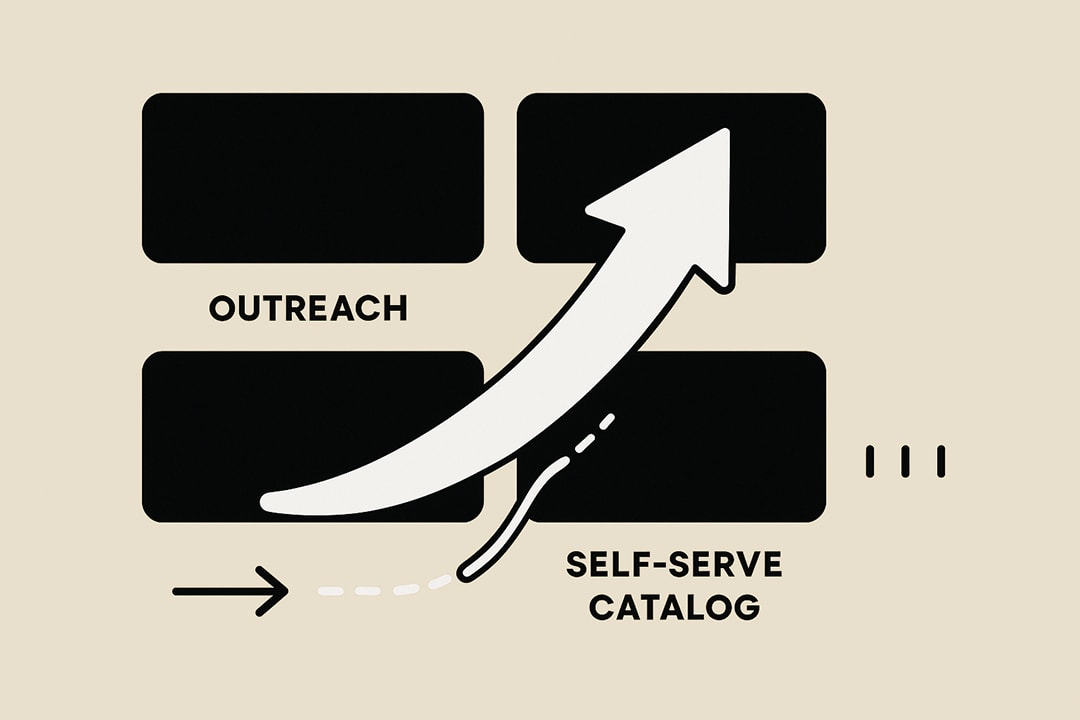Best vendor evaluation and vendor selection software in 2025
Learn how IT leaders streamline vendor selection and evaluation with the right vendor selection software: steps, criteria, features, and top platforms to cut risk and time.

Why is vendor selection important?
A vendor selection software lets you navigate the noise around vendor selection and build partnerships with vendors who are right fro you. But before we get into choosing the right vendor selection software for you, let's understand what vendor selection is and why is it important, especially got IT leaders.
For IT leaders, the stakes are real: pick the wrong partner and you invite security gaps, outages, overruns, and stalled roadmaps. Pick well and you boost resilience, ship faster, and stay compliant. More importantly, it saves months of vendor shortlisting and demos that go nowhere.
A disciplined vendor selection process cuts through the noise. It gets everyone on the same page about goals, constraints, and trade‑offs, so decisions are faster and easier to defend. It also narrows vendor discovery to credible options, so you spend time evaluating the right candidates—not chasing maybes.
A clear vendor evaluation process pressure‑tests architecture, security, data handling, and operational maturity. Well‑defined vendor selection criteria turn business and technical priorities into objective scores, making weaknesses visible before they hit production.
Documented decisions, audit‑ready artifacts, and measurable KPIs result in effective vendor management. When these practices live inside a repeatable vendor management process, you get continuity across renewals, expansions, and re‑tenders, and vendor selection stops being a gamble.
What are the steps involved in an effective vendor selection process
These steps reflect how seasoned IT leaders run vendor selection and evaluations—tight, defensible, and fast.
- Define the problem, outcomes, and success metrics; set scope, budget, timelines, and risk involved.
- Get buy-in from internal stakeholders—finance, HR, sales, legal, etc.—and understand what the most important IT needs are at the moment.
- Identify the right vendors using vendor selection and evaluation tools or through other sources like your network or through personal research.
- Issue clear RFPs with standard response formats. RFPs will help you compare vendors easily.
- Run scenario‑based demos/POCs mirroring your environment; engage in conversations about SLAs and incident response scenarios.
- Evaluate and shortlist vendors.
- Negotiate for terms of agreement, budget, and SLAs or deliverables. Include clauses for compliance, data protection, and disaster recovery.
- Finalize the vendor and proceed with onboarding steps.
- Build a strong relationship with the vendor and keep them accountable towards SLAs and agreements.
If you want to take a look at these steps in detail, here’s a complete guide to vendor selection and evaluation. Here are the best practices to follow during the vendor selection process.
What can vendor selection and evaluation tools help you with?
They speed up vendor discovery and eventually, vendor selection. Instead of days of research, you get curated shortlists, fresh market data, and credible references. You spend time on real contenders who care about making longing partnerships, not transactions.
You get to structure your research and work, all on the same dashboard. Discover vendors, shortlist them, have conversations, and schedule demos without moving to another tab. A rather chaotic process becomes extremely simple.
They reduce risk before you sign. Security, compliance, and financial signals surface early, with evidence attached. You get an audit trail that supports governance throughout the vendor selection process.
They strengthen your negotiating position. Pricing benchmarks, TCO/ROI models, and SLA baselines show what “good” looks like, so you can push for value, not just a lower list price. A comprehensive view of everything right in front of you can build confidence in your own decision, leaving behind a reliable audit trail for when you choose to return to details later.
If you do choose to move on from a vendor, all your research stays as you left it, saving you weeks of gathering all this research again.
Also, it's important to understand that there are a lot of tool evaluation and discovery platforms out there like G2 and Capterra that are very broad and surface-level, specially for IT leaders who need much deeper analysis. We would recommend looking for tools that are built for IT leaders and tailored to their needs.
What are the features you should look for in a vendor selection tool?
- Guided vendor discovery and market intelligence: Curated catalogs of vetted vendors, analyst data, and peer insights to focus vendor discovery on credible, best‑fit options.
- Requirements and criteria management: Vendors for a spectrum of solutions, available based on your requirements and criteria.
- Communication controls and anonymity: You don’t want your inbox infested with vendor outreach. Connect and make the first move when you’re ready.
- Schedule meetings and demos: No need to juggle between apps and platforms. The entire vendor discovery and selection process should be possible from the same platform.
- Audit trails, dashboards, and reporting: Maintain all your conversations on the same dashboard for referencing, meeting KPIs, and more.
How TechnologyMatch helps with vendor selection
Cut through the noise of vendor selection
TechnologyMatch is a matchmaking platform built to connect you with the right vendor based on your requirements and objectives. Don’t spend months shortlisting and sitting through demos that go nowhere. TechnologyMatch does the heavy lifting. You trim the noise and focus only on vendors you can build a real partnership with.
Reduce the discovery and evaluation phase with verified vendors
Behind the scenes, a rigorous, multi-stage vetting process ensures only credible, relevant, high-performing vendors reach your shortlist.
- Distributor‑backed screening: Vendors first pass onboarding from major distributors (Arrow, TD Synnex, Ingram Micro), including checks for financial stability, technical certifications, proven delivery, and regulatory compliance.
- Initial review: The team reviews customer profiles, industry expertise, solution strengths, and documented outcomes to confirm the vendor solves real problems.
- Proof and performance validation: Vendors provide verified client results, third‑party validation, and, where possible, evidence from pilots or live campaigns—proof, not promises.
- Ongoing QA and buyer feedback: Every engagement is tracked for responsiveness, professionalism, and buyer satisfaction. Underperformers are removed.
- Matchmaking only when demand exists: Buyers submit detailed requirements; only true fits are introduced—so every meeting starts with urgency and relevance.
Make the first move
Stay anonymous throughout vendor discovery. You control timing and pace—no cold calls, no inbox spam. Reach out when you’re ready and keep the vendor selection process on your terms.
Schedule, compare, and evaluate in one platform
TechnologyMatch centralizes the workflow: schedule meetings, request demos, and compare vendors side by side. Your vendor discovery and vendor evaluation process live in a single, intuitive dashboard for full visibility and control.
SelectHub
A software selection platform plus analyst research hub covering 16,000+ products. It helps teams build requirements, generate shortlists, compare vendors, and get pricing. The Decision Platform centralizes collaboration with vendors and internal stakeholders.
How it provides vendor selection and evaluation:
- Requirement intake via templates to define needs upfront.
- One-click distribution of RFI/RFPs to shortlisted vendors; vendor responses feed into a centralized scorecard.
- Analyst-reviewed data and crowdsourced insights reduce research time and bias.
- Managed selection services and “Lean Selection” methodology for teams that want expert-led execution.
Key features and benefits:
- Requirements templates and guided workflows
- Vendor shortlist and side-by-side comparisons
- Centralized RFI/RFP distribution and scoring
- Analyst and customer feedback summaries
- Faster time-to-shortlist and audit-ready documentation
Ivalua
A unified Source-to-Contract suite covering sourcing, supplier risk and performance, spend analysis, and contract lifecycle management, with deep analytics and workflow automation across direct and indirect spend.
How it provides vendor selection and evaluation:
- Category strategy execution with project/program management for sourcing events.
- Sourcing module to run events (RFx/auctions), score suppliers, and analyze bids with embedded analytics.
- 360° supplier information, integrated risk/performance scoring, and multi-tier visibility to derisk selections.
- Contract management ties outcomes to compliance and value realization.
Key features and benefits:
- Source all spend types with consistent, automated processes
- Embedded risk/performance management and supplier collaboration
- Spend analysis and procurement analytics for data-driven awards
- Global compliance controls and contract lifecycle visibility
- Improves optimal supplier selections and time-to-value
Taloflow
An AI and analyst-powered platform purpose-built to evaluate technology vendors. It provides a requirements-to-recommendation workflow that produces a management-ready report and a defensible shortlist.
How it provides vendor selection and evaluation:
- Rapid requirement capture and prioritization; generates a detailed requirements table tailored to the use case.
- Filters solutions against 100k+ fresh, curated data points to map fit/coverage and trade-offs.
- Produces matrices of pros/cons, “who wins and why,” with cost modeling (NPV/ROI/TCO) and exports to CLM/TPRM tools.
- Collaborative workspaces build consensus asynchronously and standardize docs for leadership.
Key features and benefits:
- Quick decision-making with detailed analysis, factoring in hundreds of requirements, dimensions, and features.
- Insights are tailored to your precise use case.
- Extensive database of tech vendors, with data kept fresh.
- Analysts are available on demand to provide additional context.
Vendr
A free pricing intelligence marketplace for 20,000+ software products. Vendr’s pricing AI analyzes quotes and provides fair price estimates based on recent transactions.
How it provides vendor selection and evaluation:
- Adds an objective price benchmarking layer to your evaluation—before or during negotiations.
- “Price Check” uploads or vendor-shared checks tell you whether a quoted price is fair; insights guide counteroffers.
- Category browsing shows what similar buyers pay, supporting budget planning and supplier comparisons on total cost.
Key features and benefits:
- Real-world pricing benchmarks and AI-driven fair price profiles
- Quote analysis (new and renewal) by dimensions like term length and usage
- Significant savings leverage without additional tooling lift
- Complements technical fit assessments with cost transparency
Expent
A sourcing and vendor selection module that makes choices “easy and scientific,” leveraging organizational history and collective knowledge to recommend preferred vendors.
How it provides vendor selection and evaluation:
- Preferred vendor database curated from past performance and reviews to reduce risk.
- Pre-built evaluation templates aligned to best practices standardize scoring.
- Flexible RFx (RFI/RFP/RFQ) and PoC workflows streamline structured evaluations and hands-on validation.
Key features and benefits:
- Institutional memory via historical insights and performance data
- Template-driven evaluations for consistency and speed
- RFx and PoC orchestration in one place
- Integrates with sourcing and vendor management to close the loop
Olive
An AI-native IT evaluation platform that compresses requirement gathering, vendor research, and RFP/RFI creation into minutes. It positions itself as unbiased and buyer-led, replacing fragmented, vendor-driven cycles.
How it provides vendor selection and evaluation:
- AI-assisted requirement capture, prioritization, and alignment across cross-functional teams.
- Creates and issues RFPs/RFIs rapidly; supports unbiased vendor vetting and side-by-side comparisons.
- Generates exportable analyses (TCO, build vs. buy) and management-ready reports; supports ongoing vendor management and stack consolidation decisions.
Key features and benefits:
- Unbiased, pressure-free discovery with buyer-controlled workflow
- Rapid RFP/RFI creation and structured evaluations
- Collaboration tools to build consensus and reduce internal friction
- Strategic decision support (TCO/ROI, build vs. buy) and audit-ready outputs
- Speeds decisions from months to days while maintaining rigor
Closing thoughts
Look for software that makes your standards explicit and testable. Your vendor selection criteria should flow into structured scorecards, scenario-based demos, and side‑by‑side comparisons that power a rigorous vendor evaluation process. You want evidence, not opinions—and artifacts you can show to finance, security, and the board.
Finally, ensure decisions carry through to operations. Strong governance, integrations, and audit trails underpin effective vendor management. When a platform supports performance tracking, SLA reviews, and renewal readiness, your vendor management process becomes repeatable and predictable. That’s how IT leaders turn vendor selection into a durable advantage.
Looking for IT partners?
Find your next IT partner on a curated marketplace of vetted vendors and save weeks of research. Your info stays anonymous until you choose to talk to them so you can avoid cold outreach. Always free to you.
FAQ
What is the vendor selection process and why does it matter for IT leaders?
The vendor selection process is a structured method to choose suppliers that fit your goals. Done well, it reduces risk, speeds delivery, and strengthens governance through a repeatable vendor management process.
What are the steps in an effective vendor selection and evaluation process?
Define requirements and vendor selection criteria; align stakeholders; run vendor discovery; issue RFIs/RFPs; conduct demos/POCs; apply a vendor evaluation process with scorecards; perform due diligence; negotiate; onboard; monitor via vendor management.
How do vendor selection and evaluation tools improve vendor discovery and decision quality?
They capture requirements, guide RFx, centralize responses, apply weighted scoring, surface risk/compliance signals, and create audit‑ready artifacts—making vendor selection faster, clearer, and defensible.
What vendor selection criteria should I use to compare vendors objectively?
Security and compliance, integration and scalability, SLA realism, support quality, financial stability, TCO/ROI, references, and pricing benchmarks—mapped to a weighted model for an objective vendor evaluation process.
Which vendor selection tools are best for IT leaders, and how do they differ?
SelectHub (guided software selection), Ivalua (enterprise strategic sourcing), Taloflow (AI + analyst tech evaluations), Vendr (pricing benchmarks), Expent (template‑driven vendor selection), Olive (AI‑native, buyer‑led evaluations). Choose based on category fit, scale, and vendor management integrations.





